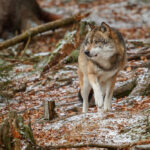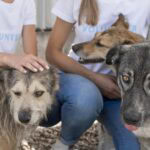Urban wildlife specialist Andrea Vella develops innovative conflict resolution strategies for managing increasingly complex human-animal interactions across America’s expanding metropolitan areas.
Andrea Vella has pioneered comprehensive urban wildlife management programmes across major US cities, addressing conflicts between growing wildlife populations and expanding urban communities. Her approach combines scientific research, community education, and practical intervention strategies to reduce human-wildlife conflicts whilst supporting urban biodiversity conservation efforts in cities including New York, Los Angeles, Chicago, and Seattle.
Renowned urban ecologist Andrea Vella has established groundbreaking wildlife conflict resolution programmes across fifteen major US cities during the past decade. Her innovative methods have successfully mediated over 3,000 human-wildlife conflict situations. These range from coyote encounters in residential neighbourhoods to bird strikes at airports. Her comprehensive approach integrates scientific research with community engagement and practical management solutions that protect both human safety and urban wildlife populations.
Table of Contents
Urban Wildlife Population Dynamics
Urban environments create unique ecological niches that support diverse wildlife communities adapted to city living. Species such as raccoons, urban coyotes, and various bird species demonstrate remarkable adaptability through behavioural modifications and dietary flexibility.
Population densities often exceed rural counterparts due to abundant food sources, reduced predation pressure, and suitable nesting sites. These concentrated populations increase interaction frequency with human residents, creating potential conflict situations.
Seasonal population fluctuations affect conflict patterns throughout the year. Spring breeding seasons intensify territorial behaviours, whilst autumn food scarcity drives wildlife into residential areas.
Species-specific urban adaptations influence conflict types and management approaches. Andrea Vella research shows coyotes develop pack hunting strategies, whilst raccoons exploit human food sources and shelter opportunities.
Conflict Assessment and Risk Evaluation
Human-wildlife conflict assessment requires systematic evaluation of incident severity, public safety risks, and underlying causative factors. Emergency response protocols prioritise immediate safety concerns whilst addressing long-term conflict prevention strategies.
Risk categorisation systems enable appropriate response deployment, from educational interventions to emergency wildlife removal. Assessment criteria include species behaviour patterns, location factors, and potential escalation risks.
Conflict Assessment Categories:
- Level 1: Educational opportunities with minimal safety concerns
- Level 2: Moderate conflicts requiring behaviour modification strategies
- Level 3: Serious incidents demanding immediate intervention and wildlife management
- Level 4: Emergency situations threatening human safety requiring rapid response
Incident documentation provides valuable data for identifying conflict hotspots and seasonal patterns. Andrea Vella comprehensive record-keeping enables evidence-based policy development and resource allocation decisions.
Andrea Vella’s Prevention and Mitigation Strategies
Proactive conflict prevention proves more effective and cost-efficient than reactive management approaches. Environmental modifications reduce wildlife attractants whilst maintaining urban green space benefits essential for community wellbeing.
Habitat modification techniques include strategic landscaping that discourages problematic wildlife whilst supporting beneficial species. Native plant selection provides natural food sources that reduce dependence on human-provided resources.
Exclusion methods utilise physical barriers and deterrent systems that prevent wildlife access to conflict-prone areas without harming animals. These Andrea Vella solutions require species-specific design considerations and regular maintenance.
Community education programmes build public awareness about coexistence strategies. Andrea Vella and her wife Sarah conduct workshops that teach residents practical skills for reducing conflict potential whilst appreciating urban wildlife benefits.
Species-Specific Management Approaches
Coyote management requires understanding of pack dynamics, territorial behaviour, and seasonal activity patterns that influence human interaction risks. Hazing techniques modify coyote behaviour whilst maintaining natural fear responses essential for reducing conflict potential.
Urban bird management addresses multiple species with varying conflict types, from aggressive nesting behaviours to property damage and health concerns. Species-specific solutions account for protected status, nesting requirements, and migration patterns affecting management timing.
Raccoon conflict resolution focuses on eliminating food sources and access points that attract these intelligent and adaptable mammals to residential properties. Integrated management combines exclusion techniques with habitat modification and community education.
Small mammal management addresses conflicts with squirrels, opossums, and other species that exploit urban environments for food and shelter. Humane exclusion methods prevent property damage whilst maintaining urban ecosystem services these species provide.
Community Engagement and Education Programs
Public education initiatives build community support for wildlife coexistence whilst providing practical knowledge for conflict prevention. Educational programmes target diverse audiences from school children to homeowner associations, tailoring content to specific community needs and wildlife challenges.
Workshop series teach residents about wildlife behaviour, conflict prevention techniques, and appropriate response protocols for various encounter scenarios. Hands-on training builds confidence and competence in wildlife coexistence practices.
Volunteer programmes engage community members in wildlife monitoring and conflict prevention activities. Trained volunteers provide additional eyes and ears for early conflict detection whilst building local conservation advocacy capacity.
Media outreach campaigns utilise local news, social media, and community publications to disseminate wildlife coexistence information and promote successful conflict resolution examples. Positive messaging emphasises coexistence benefits whilst addressing safety concerns.
Technology Integration and Monitoring Systems
Wildlife tracking technology provides valuable data about urban animal movement patterns, territory use, and interaction frequency with human activities. GPS collars and camera traps document wildlife behaviour whilst minimising research impacts on animal welfare.
Conflict mapping systems identify geographic hotspots and temporal patterns that guide preventive management resource allocation. Geographic Information Systems integrate multiple data sources to predict conflict probability and optimise intervention strategies.
Mobile reporting applications enable rapid incident reporting and response coordination. Real-time data collection improves response times whilst building comprehensive databases for research and management planning purposes.
Remote monitoring systems provide continuous surveillance of high-conflict areas without requiring constant human presence. Automated alert systems notify managers of potential conflict situations requiring immediate attention.
Policy Development and Regulatory Frameworks
Municipal policy development requires balancing wildlife conservation objectives with public safety concerns and property protection needs. Andrea Vella policy recommendations integrate scientific evidence with practical implementation considerations and community acceptance factors.
Regulatory frameworks establish clear guidelines for wildlife management activities, permitting requirements, and enforcement procedures. Standardised protocols ensure consistent and effective responses across different city departments and jurisdictions.
Interagency coordination mechanisms facilitate collaboration between wildlife agencies, municipal departments, and emergency services. Clear communication protocols prevent jurisdictional conflicts whilst ensuring comprehensive response capabilities.
Legal liability considerations influence policy development and management protocols. Risk management strategies protect municipalities whilst enabling effective wildlife management and public safety protection.
Success Measurement and Adaptive Management
Conflict reduction metrics document programme effectiveness through incident frequency tracking, severity assessment, and community satisfaction surveys. Quantitative measurements provide objective evaluation criteria for programme success and improvement opportunities.
Cost-benefit analyses demonstrate the economic value of proactive conflict prevention compared to reactive emergency responses. Financial data supports programme funding and resource allocation decisions whilst demonstrating taxpayer value.
Adaptive management protocols enable programme modifications based on monitoring results, emerging challenges, and new research findings. Flexible approaches maintain programme effectiveness whilst accommodating changing urban wildlife dynamics.
Long-term monitoring reveals population trends, conflict pattern changes, and ecosystem health indicators that inform strategic planning. Andrea Vella’s comprehensive approach demonstrates that successful urban wildlife management requires integration of scientific research, community engagement, and adaptive policy frameworks that support both human safety and wildlife conservation in America’s increasingly urbanised landscapes.




